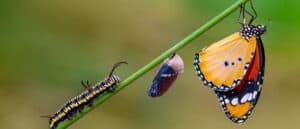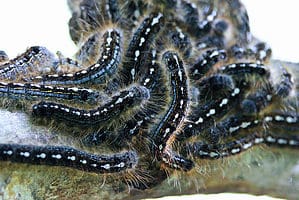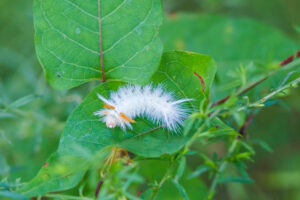They develop into moths and butterflies. But during the larva stage, they appear completely different. Learn more about black and brown caterpillars and what they could be!
Identifying Black and Brown Caterpillars
They look like worms but they’re caterpillars! Caterpillars are the larvae of both butterflies and moths. Although there are several different types of black and brown caterpillars, the most common is the furry-banded woolly bear. This caterpillar is super hairy and has a brown band that has a kind of bronze appearance. Other types of black and brown caterpillars may have smoother bodies, they might have little spines, and their patterns may be different as well.
Using these visual features can help you identify a black and brown caterpillar. Look for hairy or smooth features as well as little horns, little spines, and different markings. All of these visual clues can help you identify a black and brown caterpillar. It’s not the easiest task for the untrained eye, especially because their shapes and colors change as they grow through different stages. The woolly bear larva, for example, first starts out with short little spikes on its body before it becomes the hairy caterpillar that is most easily recognized.
Common Black and Brown Caterpillars: Descriptions and Characteristics
1. Woolly Bear Caterpillar
Scientific name: Pyrrharctia isabella
This is one of the most easily recognized caterpillars. When it’s still immature, it appears mostly black but as it grows, it develops a black and brown appearance. Their fuzz is a bit spiky and since they don’t have stinging spines, you can easily handle them.

The woolly bear caterpillar becomes the Isabella
tiger moth
.
©Landshark1/Shutterstock.com
2. Elephant Hawk Moth Caterpillar
Scientific name: Deilephila elpenor
This is a horned caterpillar. It’s both black and brown and can grow up to three inches long. On its head, it has some markings that appear like eyes. When it’s still immature, it might be kind of a yellow-white color or even a bright green. However, when it matures, it develops a black and brown appearance.
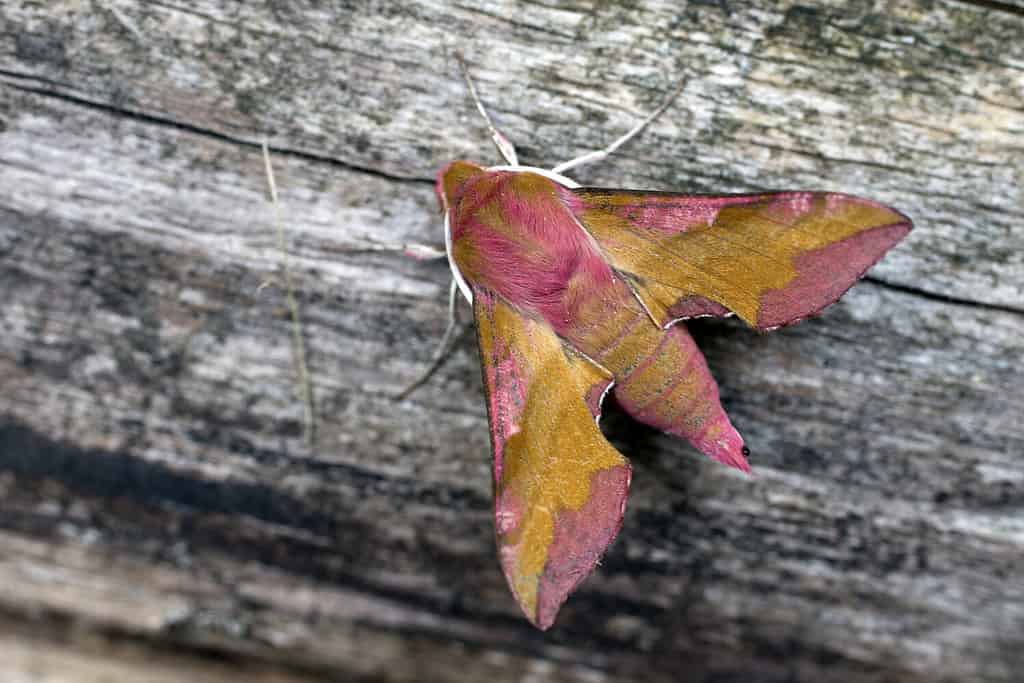
The horned
elephant
hawk moth caterpillar becomes a gorgeous moth.
©tony mills/Shutterstock.com
3. Pink-Spotted Hawk Moth Caterpillar
Scientific name: Agrius cingulata
This is another horned caterpillar. It’s brown and black but it also has a distinctive orange set of stripes on its back. The patterns over its body look a lot like triangles as well.
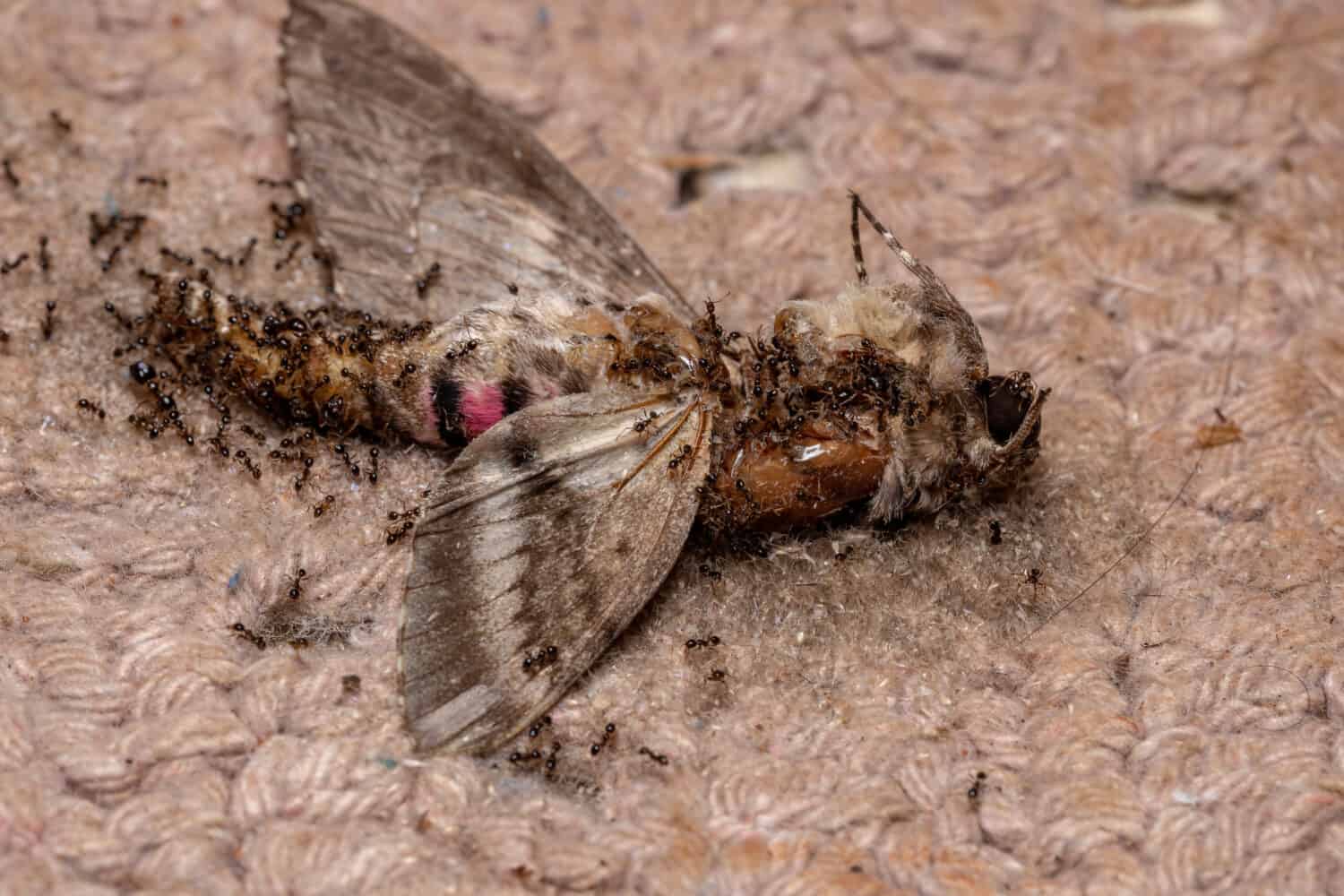
Caterpillars become moths and sometimes moths become food for ants.
©Vinicius R. Souza/Shutterstock.com
4. Scarce Dagger Moth Caterpillar
Scientific name: Acronicta auricoma
This caterpillar is black and hairy. The hairs that emerge from its body are quite long and spiky. They’re more of a brownish-orange color and their bodies are both black and brown. Although this isn’t a stinging hair caterpillar, if you do handle it, it can be irritating to your skin.
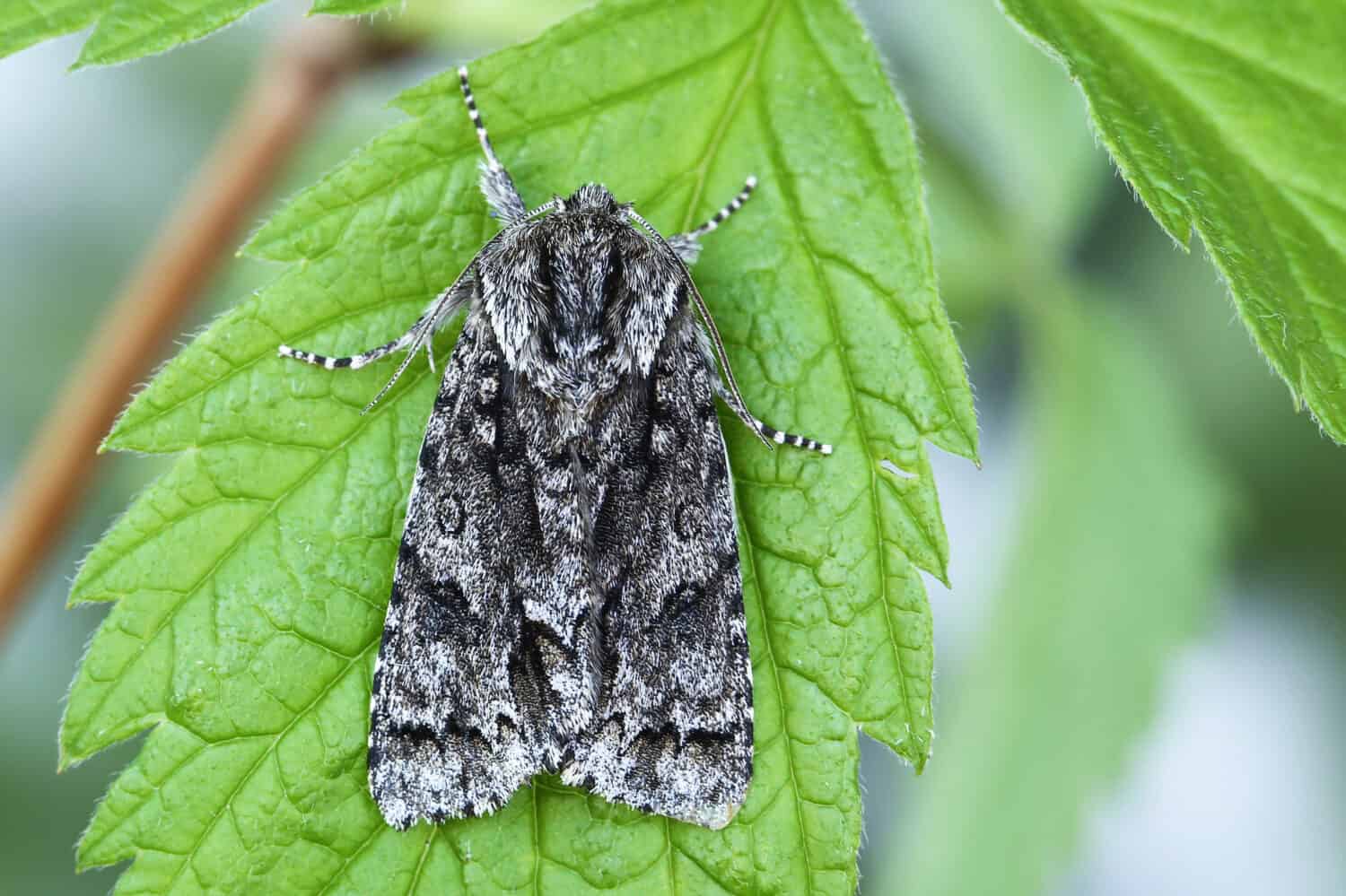
The scarce dagger moth emerges after the caterpillar cocoons.
©P_vaida/Shutterstock.com
Caterpillar Species with Black and Brown Coloration: Examples and Features
There is a wide variety of black and brown caterpillars. Some species incorporate other colors while some are distinctly black and brown. For example, the ruby tiger caterpillar has red foxy hair, which makes it easily identifiable. While some have more of a rusty brown color along with black markings, others are hairy and black accompanied by light brown stripes. The brown-tail moth caterpillar also has black and brown colorations, but it’s highlighted with orange spots, which makes it easy to identify. The imperial moth caterpillar is black and brown, but it also has very distinctive red horns. Its spines are kind of a pale color, and it is also decorated with yellow and orange spots.
Habitat and Food Preferences: Understanding the Caterpillar’s Environment
Caterpillars enjoy environments where there are plenty of grasses, plants, and flowers. They like trees as well. This is because their food source is foliage. They feed on a variety of leaves. They also snack on native shrubs and flowers. If it’s in the garden, it’s likely a caterpillar is attracted to it. Since they have insatiable appetites, always focused on their next meals, they are seen as agricultural pests. They can cause a lot of damage in their continuous quest for sustenance!
Seeking Expert Advice: Consulting a Specialist for Accurate Identification
Online identification guides are helpful when you are looking to accurately identify a caterpillar. You can compare distinctive features to the photos found online of confirmed species. However, you may also reach out to local organizations to help you with identification. If you manage to get a great photo, you can submit it to a specialist who can help you accurately identify it. The more well-versed you become with caterpillars, the easier it is to identify them.
Thank you for reading! Have some feedback for us? Contact the AZ Animals editorial team.





